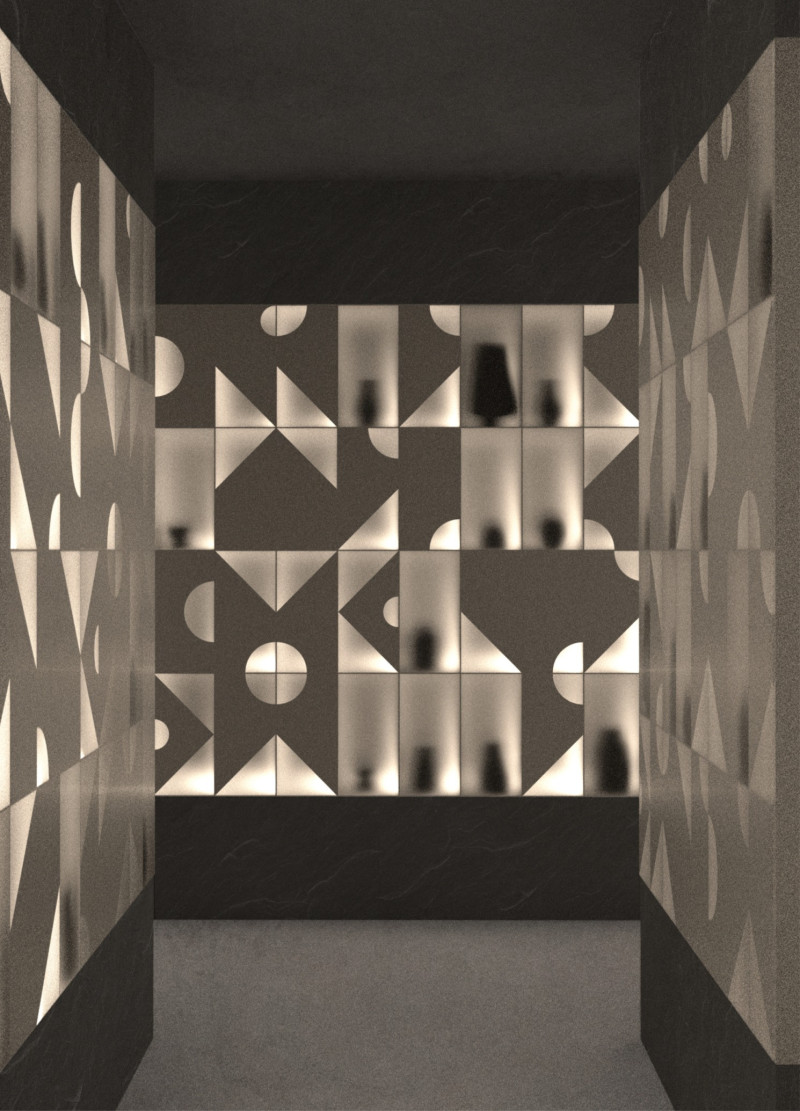5 key facts about this project
The architectural project titled "Tesselle" is a thoughtfully conceived memorial space that intertwines the concepts of remembrance and community engagement. The design consists of two primary architectural volumes that create a dialogue between heaviness and lightness, embodying the dual themes of permanence in memorialization and the ephemerality of memory. The project aims to facilitate reflection, mourning, and celebration of life through its spatial organization and materiality.
One of the main components is the columbarium, designed to house individual urns within enclosed niches. This area is characterized by a solid structure that conveys the weight of memory and offers a private space for personal reflection. The arrangement of the niches is intentional, enabling a progressive experiences that encourages visitors to engage with their memories.
Adjacent to the columbarium is the contemplative pavilion, which contrasts starkly with the columbarium's heaviness through its transparent and airy design. This space is crafted to enhance interaction and community gathering, offering informal seating areas and garden-like environments that invite contemplation and shared experiences. The pavilion's design harnesses natural light through perforated surfaces, creating a dynamic interplay between light and shadow that evolves throughout the day.
Unique Design Approaches
What distinguishes Tesselle from traditional memorial architecture is its integration of light as an essential design element. The use of perforated walls creates patterns of light that foster a sense of change and reflection, embodying the passage of time. This approach encourages visitors to engage with their emotions in a meaningful way.
Additionally, the project interlaces various cultural narratives through its spatial expressions, making it adaptable to different traditions of remembrance. The columbarium and pavilion are designed not merely as structures but as facilitators of collective memory, fostering an atmosphere where individual and communal experiences can coexist.
Material selection also plays a critical role in shaping the identity of Tesselle. The use of concrete for structural elements conveys durability, while metal and glass enhance the feeling of transparency and connection with the surrounding landscape. This careful choice of materials contributes to the overall experience and sentiment of the space, making it reflective of both weight and lightness.
Spatial Organization and Experience
The architectural organization of Tesselle emphasizes a seamless flow between the differing volumes, encouraging exploration and interaction. The niches in the columbarium are methodically arranged to allow visitors to navigate through them, fostering contemplation and personal connections to those remembered. In contrast, the open pavilion invites visitors to come together in remembrance, characterized by informal settings that prompt social interaction.
Ultimately, the design outcomes of Tesselle reveal an architecture that is both functional and evocative, engaging visitors in a dialogue about life, loss, and memory. The project stands as a significant contemplation space that supports individual reflection within a communal context.
To gain a deeper understanding of Tesselle, interested readers are encouraged to explore the architectural plans, sections, and design ideas available in the project presentation, which offer further insights into this innovative memorial space.





















































